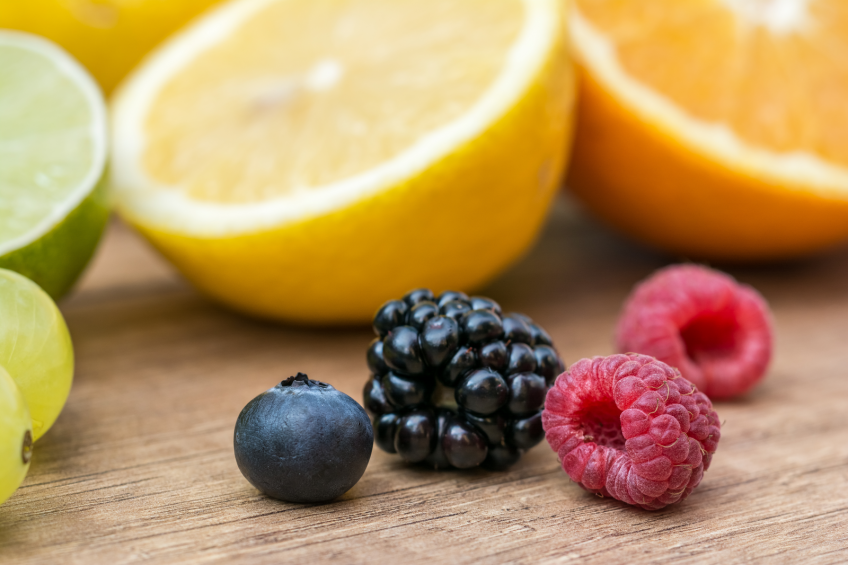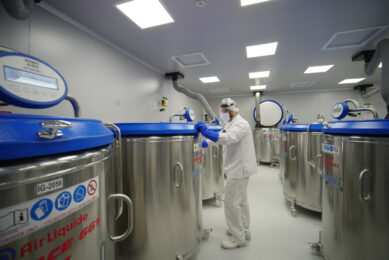Natural antioxidants help piglets through weaning

Weaning is one of the most important periods in a piglet’s life. Weaning causes oxidative stress, and this has negative influences on gut health and growth performances. Natural ?antioxidants like polyphenols can be used to counter this oxidative stress.
Piglets experience a lot of stressors after weaning: they are separated from the sow, lose milk as the most important feed source, have to adapt to a new environment, are mixed with piglets from other litters.
All these stressors cause an elevated production of free radicals in the piglet’s body. These free radicals are reactive species that can cause great damage to body tissues if they are not neutralised. An important part of this damage is the destabilisation of gut barrier function, by weakening the tight-junction proteins. In this way antigens, toxins and pathogens are able to enter the body. This causes inflammation, reduced growth performance and an elevated mortality.
Natural antioxidants
Piglet feed is usually supplemented with antioxidants like vitamin E and selenium to counter these negative effects of oxidative stress. Research showed that not only these traditional antioxidants, but also some plant polyphenols have antioxidant properties.
Polyphenols are a diverse group of more than 8,000 compounds, occurring in almost every plant. Plants like these, grapes, berries and nuts contain a high amount of polyphenols. Thanks to their chemical structure, polyphenols are able to sequester free radicals.
A lot of polyphenols show antioxidant properties when assessed with the ‘oxygen radical absorbance capacity’ method (ORAC). This ORAC test considers how strongly the antioxidants protect a fluorescent molecule from degradation. The higher the ORAC value, the higher the antioxidant properties. In practice antioxidant properties of polyphenols are not always confirmed. Indeed not all polyphenols are equally absorbed by the intestines.
Often a very low accumulation of polyphenols in internal organs like the liver is measured. So it is not clear if polyphenols are well suited to counter oxidative stress in organs like the liver. However this accumulation in organs is not needed to protect gut cells against oxidative stress. By uptake in the intestinal cells polyphenols are well suited to counter oxidative stress locally in the intestines, and in this way strengthen the gut barrier function. This protection is exactly what is wanted in piglets to reduce the number of infections and result in healthy, growing piglets.
Intracellular antioxidant properties
Nuscience, in corporation with the University of Antwerp, Belgium, developed an in vitro model of the gut epithelium, to facilitate the effective screening of intracellular antioxidant properties.
With this model it is possible to test antioxidant properties in vitro, not in a test tube but really inside intestinal cells.
Contrary to the chemical ORAC method, this model also accounts for uptake inside the cells. Specific selected polyphenols are clearly able to reduce oxidative stress inside epithelial cells. This oxidative stress can be measured by oxidation of a fluorescent marker molecule (Table 1).
With this model it is not only possible to measure the effect of polyphenols on intracellular oxidative stress, but also assess directly the effect of polyphenols on gut barrier function. The permeability of the intestinal epithelium can be assessed by measuring the passage rate of a macro molecular marker across the epithelium. This permeability is clearly increased after inflicting oxidative stress. By adding specific selected polyphenols it was possible to reduce this negative effect to a minimum. The anti oxidative effect of polyphenols was equal to the effect of vitamin E (Figure 1).
By reducing the oxidative stress in the small intestine, polyphenols can exert a vitamin E sparing effect. The spared vitamin E can be used in other tissues to counter oxidative stress. This results in better growth performances.
Improved performances
Nuscience was able to select a mixture of specific polyphenols, thanks to this model. This selection was not based on ORAC values, but is based on their protective effect on intestinal cells.
In trials a 7% improved growth performance of piglets during the first four weeks after weaning was observed when adding natural polyphenols (Vitanox) to the diet (Figure 2).
An understanding of the impact of weaning stress on intestinal functionality, and on health and growth performances of piglets is necessary to make weaning diets for piglets. Next to the use of palatable and well digestible ingredients, antioxidants can be used to reduce the impact of metabolic stress on the intestinal functionality. In this way weaning goes smoother, with a better growth and health as a result.
Article featured in Pig Progress 31.2 2015
Log in or register for free to view more issues from Pig Progress











